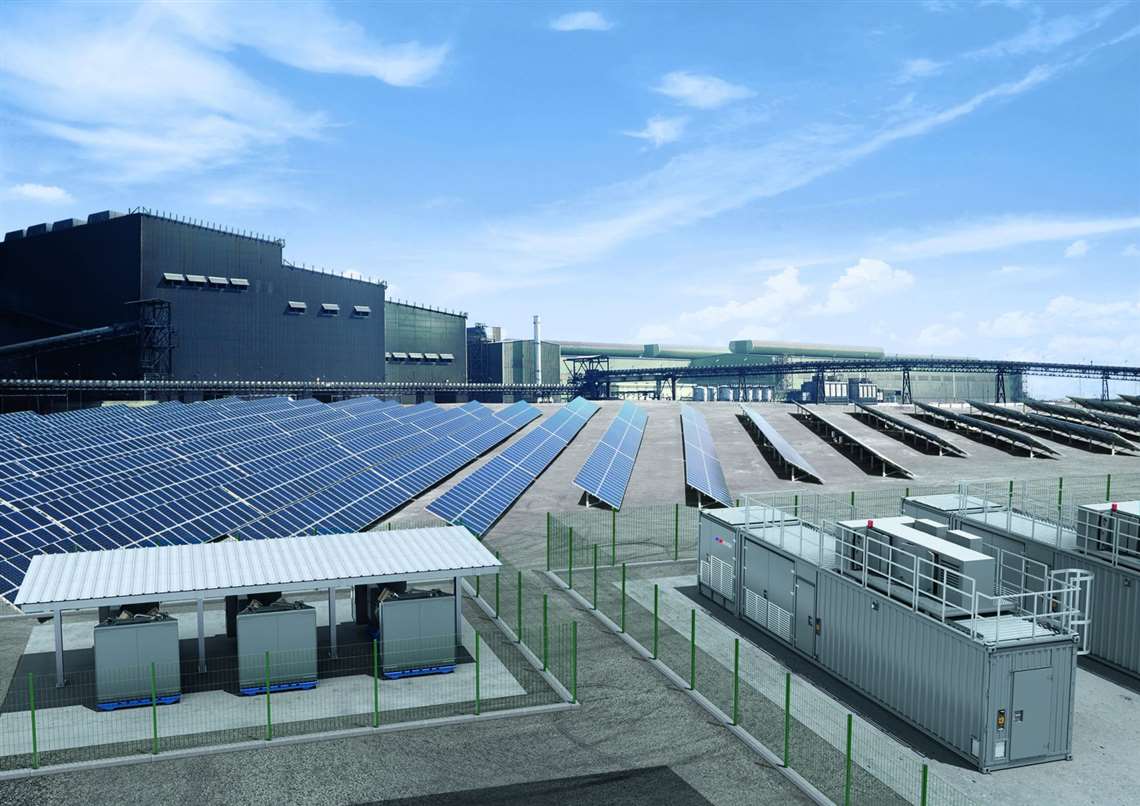The Movement Toward Microgrids
20 February 2019

Resiliency. That’s the word often heard in discussions of microgrids, conversations that are taking place now more than ever. Some say it began in earnest in 2012, when Super Storm Sandy turned off the lights for millions of residents along the East Coast. Institutions such as Princeton University, which had installed a microgrid system many years prior, stayed powered up. The storm and its aftermath proved the resilience of the microgrid. Since that time, new companies and customers have entered the fray worldwide.
In mid-2018, Shell’s New Energies business purchased a majority interest in GI Energy, a Chicago, Illinois-based company that works with real estate developers, campuses, municipalities, hospitals and utilities to create onsite energy solutions, including microgrids. The company specializes in distributed energy resource development, financing, construction and advisory services.
In October of the same year, Rolls-Royce Power Systems invested in German startup company Qinous GmbH, a global provider of energy storage and control systems. Qinous has reportedly integrated battery storage and energy systems in microgrids in more than 30 projects worldwide and has used MTU Onsite Energy systems from Rolls-Royce in those projects. For its part, Rolls-Royce said the investment would allow it to provide turnkey microgrid solutions.
When weather conditions are poor, the increased use of renewable energy sources has added to the challenge maintaining a reliable energy supply, said Rolls-Royce. Microgrids combine cogeneration plants, diesel- and gas-powered gen-sets and renewable sources with batteries and depend on a control system to manage each component to optimize energy usage. They can help ensure the power system is resilient regardless of weather or another event.
“Microgrids combine clean and cost-effective renewable energies with our reliable generator sets and are thus the future of the power industry,” said Alexander Patt, project leader of Microgrid Solutions at Rolls-Royce Power Systems.
Denmark-based control system developer DEIF Inc. draws on its land-based and wind power divisions to provide solutions for microgrid customers. The company’s AGC-4, for example, is a flexible control unit designed to protect and control a gen-set. It can be used as a single unit for one gen-set, or several AGCs can be connected in synchronizing projects, islanded or paralleled to the mains. It is compatible with DEIF’s ASC-4 hybrid controller, designed for the integration of diesel genset applications into a variety of microgrid installations.
“The controller integrates with our other controllers on the CAN network,” said David Stringer, business development manager, DEIF USA “Our controller basically decides if it wants to do wind, solar or diesel based on weather. And it can choose between all those different modes which is the most economical or the power source that’s the most readily available. The diesel gen-set will only run when batteries are dying or the sun’s not shining. We are using our different business channels and our expertise in renewables and land power generation to provide solutions and we don’t just want to provide a single part. We help customers come up with a complete solution.”

An active member of the Electrical Generating Systems Association (EGSA), Stringer will lead a new committee that will cover the subject of microgrids and renewables in 2019. The group met for the first time during EGSA’s Fall Conference in Nashville, Tenn.
“I think microgrids have got to get more mainstream and providing information through the EGSA committee is one way to do that,” said Stringer. “We’re seeing that the integration of microgrids will be happening a lot more in the next two or three years. I think adoption will be happening soon because people are thinking, ‘do I want to be relying on the grid all the time?’ People are fed up with failures in the national grid. They do not want to be reliant on a utility. But microgrids can take six to 12 months to get approval and it can be a lot of work.”
Microgrids vary in size. Single-user microgrids can include mines, military bases, university and commercial campuses, while community microgrids can be found in urban and suburban settings and often use portions of the existing utility infrastructure. When operated in parallel with existing infrastructure, they can provide an environmentally friendly supply of electric power to companies or communities while simultaneously providing support for the public grid. Electric power systems found on islands such as Hawaii are also considered microgrids.
Where possible, however, Stringer said most microgrids will have a connection to the national grid. “They may not want to run on the grid because the grid prices are so high, and they can actually do it with solar and generation power generation of batteries cheaper. But because of resilience they want to have a connection to the grid if the batteries are depleted, for example.”
– By Chad Elmore
STAY CONNECTED




Receive the information you need when you need it through our world-leading magazines, newsletters and daily briefings.
POWER SOURCING GUIDE
The trusted reference and buyer’s guide for 83 years
The original “desktop search engine,” guiding nearly 10,000 users in more than 90 countries it is the primary reference for specifications and details on all the components that go into engine systems.
Visit Now
CONNECT WITH THE TEAM









